
Justine1 looked at her 7 year-old daughter, Lily, and said, “What do you think about a road trip?” Lily had just started the January term of online school, and Justine figured she would make it work the best she could by sharing her cell phone while she drove. The next morning, she packed their belongings in two suitcases and stowed them in the trunk of their 2011 Toyota; Justine hoped the bald tires would last through the Wisconsin weather until they got far enough south.
In a folder, Justine carefully organized all the court forms she’d been working through to fight their eviction and apply for emergency aid. Despite the moratorium she heard was in place, she couldn’t find any legal help; everywhere she called was already completely overwhelmed by other cases and working with limited staff, remotely. She felt angry and sad. The past months before COVID-19 had been going so well: her victim services coordinator from her sex-trafficking case had helped her find housing and get involved in advocacy work she was proud of, she had a job in a local restaurant, and she and Lily had finally lived in one place for more than six months. Lily was making friends and Justine could start pursuing her teaching degree.
But COVID-19 closed the restaurant, and when Justine couldn’t meet in person with her victim advocate anymore, the bottom started to drop out as the stress mounted of not being able to pay the bills and care for Lily. Justine figured that down by the southern border, she could at least be homeless and warm. She and Lily had done it before and could manage again until things changed. She’d find work somehow. Until then, she’d keep texting the help hotlines as often as she could. She was determined to not return to the “Life.”
----
Since 2017, when I last wrote about sex trafficking in Wisconsin,2 the world has changed. There’s not a single lawyer who can’t point to effects, temporary and permanent, on their work; on clients, the legal issues, themselves. This article takes a deeper dive back into the issue of sex trafficking3 in Wisconsin with a specific focus on how COVID-19 has changed “the game.”
Experts on the Frontlines Answer Five Key Questions
Sex trafficking, in short, is “modern-day slavery and involves the use of force, fraud, or coercion to obtain some type of commercial sex act.”4 This article gathers a diverse pool of Wisconsin experts to answer five questions. Prosecutors, victims’ right’s lawyers, and nonprofit service providers join survivor leaders-advocates in giving their insights to the following questions:
How were victims5 affected during the pandemic?
How did the work itself change?
Were there innovations in services or victories for victims despite the challenges?
What partnerships sustained efforts to help address the issue?
What should our priorities be for both policy and advocacy efforts directed at sex trafficking in Wisconsin?
Sex trafficking is in all counties in Wisconsin and affects all socioeconomic groups, races, genders, sexual orientations, faiths, and abilities. While sex trafficking has increased in visibility, and even as funding has increased for prevention, awareness, prosecution, and services in the past 10 years, it is still very difficult to obtain services or pursue perpetrators in some parts of the state. To the extent that a service provider, survivor perspective, or geographic area is not reflected in the following responses, I hope others will write to the editors or post comments to this article online to expand the value of this piece.
 Rachel K. Monaco, Marquette 2004, is the founder of LOTUS Legal Clinic, teaches art therapy, and has a private practice in trusts and estates. Her work regarding victims of sexual assault and human trafficking has been awarded in Wisconsin and nationwide, particularly regarding the powerful merger of law and the humanities to effect systemic change in the justice system. She is a founding member of the National Crime Victims Law Institute Advisory Council and mentors other nonprofit founders and survivor-advocates. She also mediates probate, elder, and trust matters and trains others in those skills. She is an accomplished ultrarunner, having completed 15 ultramarathons, taking master’s champion in three 100-mile races to date.
Rachel K. Monaco, Marquette 2004, is the founder of LOTUS Legal Clinic, teaches art therapy, and has a private practice in trusts and estates. Her work regarding victims of sexual assault and human trafficking has been awarded in Wisconsin and nationwide, particularly regarding the powerful merger of law and the humanities to effect systemic change in the justice system. She is a founding member of the National Crime Victims Law Institute Advisory Council and mentors other nonprofit founders and survivor-advocates. She also mediates probate, elder, and trust matters and trains others in those skills. She is an accomplished ultrarunner, having completed 15 ultramarathons, taking master’s champion in three 100-mile races to date.
Get to know the author: Check out Q&A below.
Responses have been grouped on purpose into four categories: prosecutors; survivor leaders-advocates (individuals who are survivors of trafficking and also work directly in the field as a career); victim service providers; and courts and legal services. The groupings help make it obvious that no one perspective sees things quite the same way, that everyone can still be correct in their views, and that collaboration, communication, and teamwork are absolutely necessary in both understanding and combatting sex trafficking.
The nuanced responses of each contributor matter. Yet there are through lines and themes as well.
Services during COVID-19 suffered. Services were fewer and harder to deliver, everywhere. Basic survival and safety crises were exacerbated for individuals who were already among the most vulnerable and in areas where there were limited services to begin with. Marginalized populations especially faced discrimination and experienced cherry-picking in the distribution of limited resources.
Face-to-face interactions are essential to working effectively with victims. The new tools of remote work provided some benefits; for example, victims’ privacy and safety increase with remote court proceedings. But overall the workarounds in using online interfaces or phone to conduct the business of prosecuting cases, connect victims with resources, address victims’ legal needs, and help victims cope with trauma did not replace the short-term efficiency and the long-term benefits of in-person interaction. Reading cues from body language, fostering emotional connection, building trust, and simply being human together are fundamental to trauma-informed and effective work to combat human trafficking across the board, no matter where in the system it is encountered.
Yet, an important exception to that conclusion regarding face-to-face interaction is found in Lea Denny’s insights about conversion to remote holistic health services for the Native American population her organization serves. It appears to be the case that with certain groups and types of services provided in very sensitive and responsive ways, access to services actually increased exponentially when remote and on-demand platforms were adopted. So much so, that these methods are now permanent.
Existing strong partnerships got stronger. Strong partnerships between organizations that pre-dated the COVID-19 pandemic tended to stay strong and get stronger. There was less energy during the pandemic for developing new collaborations.
Organizations experienced increased compassion and appreciation for their workers. Within organizations, staff had increased compassion and appreciation for each other, especially those who performed direct service and crisis stabilization as the primary part of their role. Every contributor to this article acknowledged the toll that secondary trauma played in the day-to-day lives of staff during the early days of the pandemic and into the present. Respondents talked about the importance of self-care, flexibility of work hours and settings, and the need for adapting to needs of the moment; what applied to the population served was the same as what staff needed. Nearly all respondents used the phrase “meeting people where they are at” or its equivalent when it came to how their work practices shifted.
Policy Priorities and Advocacy Needs
The most recurrent policy priorities respondents named are 1) expanding Wisconsin’s vacatur statute6 or removing barriers to clearing criminal records for survivors; 2) providing safe, affordable housing for youth and adult victims; and 3) funding and delivering wraparound resources to adult victims of trafficking in a sustainable and trafficking-specific manner.
Notably, Lea Denny’s comments about data and our real need for improvement to our status quo mirror the national and state policy experts’ call to action; without good data, there will be no meaningful or effective policy-making. As a general rule to date, we don’t have the needed data to really address sex trafficking comprehensively. Finally, Erika Petty’s statement about survivor voices guiding and driving policy is compelling and necessary; as Claudine O’Leary’s and Nancy Yarbrough’s contributions to this piece demonstrate, there is simply no substitute for the contributions of individuals with lived experience and insight and no excuse for not having them at the table.
The most pressing advocacy needs are 1) better cross-systems coordination and a conscious effort toward breaking down the silos that exist; and 2) specific, accessible, high-quality system-wide training about human trafficking for nearly everyone.
The pandemic exposed how fragile our supports are for
youth and adults who are being trafficked and how many
of our supports are reliant on a small number of people
who are asked to go far and above with very little.
Questions and Answers
Respondent’s answers appear in the following order: law enforcement and prosecutors; survivor leader-advocates; victim services; and courts and legal services.
How did the pandemic most affect Wisconsin victims of trafficking and what trends do you see now?
Joel Urmanski, Sheboygan County District Attorney: Trafficking has not stopped because of the pandemic. One of the biggest changes was a decrease in people engaging and interacting with each other in person and in public. All members of society interact with human trafficking victims and, when aware of the signs and indicators of trafficking, can make reports to law enforcement. Gas station, convenience store, retail, hotel, medical care, school, and so many other employees interact and come into contact with human trafficking victims. When these interactions decreased, the ability to see, discover, and report possible human trafficking was affected.
Erin Karshen, Milwaukee County Assistant District Attorney: What affected everyone was the feeling of isolation, and this was just amplified for the victims because that is one of the vulnerabilities traffickers prey on to begin with. The traffickers step in to provide everything for those they groom: housing, clothes, food, a sense of community. So the pandemic made it easier for traffickers to exploit and control that when victims were at greater risk overall. People with limited means really struggled because access to resources was difficult and resources were reduced to begin with. Everything from basic phone or internet service to walk-in clinics or shelter spaces that had to cut hours under lockdown; it was just so difficult for victims and, overall, increased their vulnerabilities.
Nancy Yarbrough, Fresh Start Learning Inc.: COVID-19 lockdowns affected the way victims came into our shelter. Individuals were more in survival mode than ever but didn’t always want to shelter in – they wanted to be on the street making money instead. This was most true for the age 18 and over group and directly resulted from shelter-in-place orders. We saw more new women. The women we served in the drop-in centers came in with more webcam or online sex work experiences, more ways to do sex acts for money that were linked to devices and bank accounts, rather than in person.
Claudine O’Leary, Community Educator and Youth Worker: It’s complicated. I’m struck by how the pandemic exposed how fragile our supports are for youth and adults who are being trafficked and how many of our supports are reliant on a small number of people who are asked to go far and above with very little. And there’s a story that we can tell about that – which valorizes and puts those people up on a pedestal. But that’s not a strong community of support that each person deserves.
Brenda Bayer, The Women’s Community Inc.: During the pandemic it was more difficult to connect victims to specific resources. As we and our system partners largely worked from home, everyone was learning new ways of business, and we all had to learn new techniques of connecting. The ability to help victims find safe housing, move to safer geographic locations, and so on, was very limited. During the lockdown, with minimal ability to move around or even leave their homes or shelters, advocates spent a large amount of time checking in and spending one-on-one time with survivors using technology. Some long-term clients did not reach out for services during the pandemic. Others increased attempts to receive (mostly emotional) support. I feel many opportunities to connect with victims in emergency rooms were lost, as we were not responding in person to domestic violence and SANE (Sexual Assault Nurse Examiner) exams.
Meeting victims over the phone brings its own set of challenges, as body language, empathy, and human connection are all more difficult to read and share accurately. In a sense, it felt like time was standing still. Once restrictions lifted, we began to see an escalation of crisis calls, and specifically more trafficking referrals have been coming in. Not just from Wausau, but from surrounding counties and originating in other states.
Lea Denny, HIR Wellness Institute and Center: Prior to the pandemic we already had limited access to safe spaces for our trafficked relatives (how we refer to our clients) to go to be in respite. The pandemic just drastically made this worse, practically and traumatically. Our advocates couldn’t assist people in hospitals, and shelters had so many restrictions – victims weren’t even allowed to take the little bag they had brought from home. We saw an uptick in trafficking – people wanted out but had nowhere to go. Even just finding a landing place for 24 hours was not possible. Too much need, not enough supply.
Sadly, we also witnessed quite a bit of racism for our native women (and in some cases, toward our native staff advocates) at certain shelters. We saw pronounced inequity in how COVID-limited resources were allocated; there were assumptions made about who was deemed deserving. Racism and bias contributed to even greater marginalization for native women who are being exploited.
Judge Thomas Walsh, Brown County Circuit Court: The pandemic made direct interpersonal contact harder to find in the courthouse. It made court personnel more difficult to reach. Therefore, it made victims of human trafficking harder to find and harder to help because we couldn’t interact with them. Victims are not always reaching out for help. Sometimes we need to reach out to them. The remoteness created by the pandemic made reaching out almost impossible to do. Thus, the efforts to curb trafficking in human beings took a serious blow during this time.
Many counties are now opening up and that interpersonal contact will start again. That should help matters, but case volumes could hinder those efforts. Many courts are dealing with incredible case backlogs. We have to ensure that in our effort to move quickly to process cases we don’t overlook those victims in need of help. Also, resurgence of the COVID-19 pandemic (through the Delta or some other variant) may cause the court system to reassess opening courthouses to litigants. If that occurs, victims of trafficking may again be pushed away and difficult to spot.
Finally, treatment and therapy was often conducted via video conferencing. This is simply not as effective as a way to get treatment. That impacted the way in which we were able to help victims of trafficking.
Erika Petty, LOTUS Legal Clinic: The pandemic exacerbated systemic challenges and problems that have historically perpetuated the crime of human trafficking. The lack of stable employment [and] housing and increased isolation put pressure on people already struggling and forced many to succumb to dangerous environments and dangerous people.
Victims of sex trafficking in Wisconsin experienced more isolation and less access to opportunities of support and assistance. There were challenges staying connected with advocates and support systems. The closure of our courts put victims who disclosed sex trafficking to law enforcement in increased danger from people associated with their trafficker. Incarcerated traffickers were using COVID-19 as a reason to petition the court for release prior to trial. There were also incidents when victim and trafficker were in the same jail for longer time periods due to COVID-related jail protocols.
Trend wise, there is more acknowledgment and appreciation for supportive services that are tailored to an individual’s needs. More institutions are talking about victim-centered approaches to their anti-trafficking work. It is a realization that victims of sex trafficking need resources to really move on from their exploitation and it takes more than prosecuting the trafficker. I think there is a growing realization that the … human vulnerabilities that traffickers exploit are the same vulnerabilities that must be effectively addressed to really help and support survivors. The lack of a social safety net for many Americans is something this pandemic exposed in general.
There is still a need to stop criminalizing the victims,
which is especially hard on those over 18.
-----
Justine said, “It is unbelievable how my social media accounts just exploded with unwelcome posts from buyers when COVID hit. I shut them down. But before I did, I took screenshots of some of what my feed contained and I sent that to a detective I’d contacted before. These people were openly soliciting for online or in-person sex and doing it from right here in this community, some even worked in our schools. I just don’t think people understand that the demand fueling sex trafficking is right here, all the time. COVID didn’t make it disappear – quite the opposite.”
How did your work change as a result?
Erin Karshen, Milwaukee County Assistant District Attorney: Before the pandemic, we had a very paper-heavy system, which depended on meeting in person, handing people resources, and giving immediate crisis counseling. So logistically we had to switch the whole way we worked. There was no infrastructure for working remotely when COVID-19 hit, so the way we processed cases had to change. We learned it is really hard over the phone to make a deep personal connection, especially on the topics we deal with, which are most often painful and difficult. On one hand it was easier to take that 10 or 20 minutes to talk more often during the day, but there was a sense of loss of connection, without names and faces in person.
Remote work modified how we talked to people, especially victims. There was no chance to see people’s reactions, their body language, and we were less able to speed up or slow down our questions based on visual cues. I found myself trying to integrate a lot of phrases; “tell me if this is too much, tell me if I’m going too fast, do you want me to keep going?” because I couldn’t see people’s reactions. With discussion of traumatic events and the extreme detail that we have to ask for, it is really hard to tell when someone is shutting down. It felt like we had to retrain our brains to concretely verbalize things that came so much more naturally in person.
Nancy Yarbrough, Fresh Start Learning Inc.: The need for overnight care shifted – we cut our available beds by half. Getting funding was really hard – online fundraisers are not as successful as in-person ones. Our support groups were cut off for six months. There were more videoconference calls and less face-to-face interaction for crisis stabilization. But we had increased demand for in-person work with girls ages 12 to 17 in care facilities despite the fact there was less contact with individuals ages 18 and above. COVID just made the dynamic different, but it didn’t decrease demand for us.
Claudine O’Leary, Community Educator and Youth Worker: I was fortunate to be able to pivot a lot of my consulting work to assisting nonprofits as they dealt with dramatically different circumstances. I witnessed and helped several agencies contend with constantly changing information and resources to step up in all sorts of ways. Many of the programs I assisted kept providing essential support throughout the pandemic. So, I didn’t experience a slowing down at all but rather a series of pivots.
Personally, unexpected family responsibilities meant I had to take a break from so much of my ongoing direct work with teens who’ve been trafficked, which had been possible as I donated all my time. I’ve only recently been able to stabilize the situation so I can once again lead youth groups and work directly with teens.
Brenda Bayer, The Women’s Community Inc.: I have found myself screening in new ways when called by victim advocates searching out help for trafficking survivors: pointedly asking what are mid-term goals for settling in and finding housing. Wausau is not friendly to folks looking for affordable housing. I searched upwards of five months to find adequate housing for a survivor who relocated here right before the pandemic and did not want to leave their newly found support system. Many rents have increased, and landlords appear more skeptical and unwilling to take a chance on a new tenant who is learning independence and stability.
Lea Denny, HIR Wellness Institute and Center: We went into a very hybrid approach to mental health and community-activated medicine and wellness services as we adapted to what the new needs of the survivors were. Completely being virtual (100 percent of our mental health services) changed how we delivered care. We are not going back! We’ll support in person now that lockdown is lifted, but virtual actually helped us serve people more effectively because we could reach people where they were at; videoconferences are much safer and more possible for some of our clients. There was greater access to care for more of them, and it was better tailored to their specific needs.
Judge Thomas Walsh, Brown County Circuit Court: Ultimately, the events of the pandemic simply necessitated more vigilance. Courts had to be more vigilant in trying to see and reach out to victims of trafficking. Given that adversary counsel and prosecutors were not directly interacting with litigants and victims, it put even more pressure on courts to ask questions and probe for information.
Erika Petty, LOTUS Legal Clinic: There were more intentional efforts to meet with clients where they feel most comfortable. We needed to change the way we communicated with clients during the pandemic as many of our clients were more isolated and transient. This meant we needed to find ways to shift our modes of communication and how frequently we needed to reach out to make sure we had up-to-date contact information. It was definitely hard. We also recognized the need for more mental health resources for our clients and sought more partnerships in this area.
Were there any innovations that occurred or any significant victories you celebrated?
Joel Urmanski, Sheboygan County District Attorney: I hope that the pandemic brought an opportunity for multidisciplinary teams to discuss how the pandemic altered the discovery of human trafficking, to make changes and to be better able to identify human trafficking now that we are starting to return to more in-person interactions.
Erin Karshen, Milwaukee County Assistant District Attorney: We all did try to find different ways to connect. We got good at Teams and Zoom videoconferencing. At the beginning, we celebrated each time the audio worked! We gained more perspective on the real secondary trauma our attorneys and victim advocates faced as well as the victims’ firsthand trauma. As attorneys, we now understand in greater depth how our advocates never give up, how due to COVID-19 they had to give bad news to victims over and over – trials adjourned, or an attorney didn’t pass a health screen, or a defendant is in quarantine, so more delays.
The advocates were amazing; the level of frustration that everyone in the system dealt with was high, but specifically for the victims, and that got directed toward the advocates. But they “just kept swimming” like Dory in Finding Nemo, and helped victims through to the next conference, the next court date. It was a healthy reminder of how hard that job is and how much of the brunt they bear; it changed perspective for everyone in the system to see it more pronounced under COVID.
Nancy Yarbrough, Fresh Start Learning Inc.: As a victory, there is a silver lining to the increase during COVID-19 in work with girls ages 12 to 17. I believe there is more awareness now with parents interacting, sharing concerns about their kids being trafficked, and reporting kids missing. Finally, after more than 10 years, awareness efforts are seeming to pay off in getting support sooner for younger victims. We were able to get a grant from Bader Philanthropies to keep doors open and served more than 600 folks in six months between our street-service route (distributing hand sanitizer, masks, gloves, water, resources) and offering a lunch program as well. There was interaction, conversation, and compassion.
We innovated in surveying people during street outreach when we added “survival sex” as a reason for homelessness; before COVID, it wasn’t something people made a connection with. This helped people come forward and obtain services. For our shelter, we also created shower and laundry hours with no expectations that people stay. More people came in off the streets and we could build some trust with them.
Lea Denny, HIR Wellness Institute and Center: We created therapeutic virtual webs of support that increased the hours of care we could provide. We now have more than 1,000 videos online of our own services for people to access. This worked – it was on their schedule, their demand. What our data supports is huge growth in the amount of sessions: counseling, advocacy, occupational therapy, and so on.
We also built in self-care and self-compassion practices, being attuned to staff to get them whatever they need, telling people “don’t fake a smile if you can’t today.” We built a culture of care in our organization. On site at our center after lockdown ended, we brought in Reiki and other healing modes, to educate staff, but also for them to take in what they personally needed. We have hot towels for staff during the day (for hygiene and self-care) with aromatherapy. Just asking someone “Is your tea filled up?” or offering sage smudge for anyone who wants it. We rebuilt a psychologically safe workplace.
Judge Thomas Walsh, Brown County Circuit Court: A small victory. A young mother addicted to drugs arrived in my treatment court. She has one child and does not know who the father is as a result of being herself trafficked. Just finding her was fortunate. This mother has clearly faced a great deal of trauma in her life. Progress is slow, but it is being made. With some hard work and a little bit of luck, her child will not be faced with the same set of circumstances in life.
Erika Petty, LOTUS Legal Clinic: One of the bigger innovations that occurred as a direct result of the pandemic was the shift from in-person to remote court hearings. With this shift came opportunities for victims in sex trafficking cases to participate in these proceedings more anonymously, protecting aspects of their privacy and safety. Additionally, there was movement toward more testimonial accommodations for victims with safety concerns, especially in administrative hearings such as probation revocation hearings. My hope is that these innovations will continue beyond the pandemic.
What partnerships or collaborations are the most supportive of you in what you do or of the clients and survivors you serve?
Joel Urmanski, Sheboygan County District Attorney: Community partners are essential when investigating and prosecuting human trafficking cases. I have found that communication between school officials and law enforcement is very important when addressing trafficking of children. Child advocacy centers are important when it comes to interviewing child victims and witnesses. Victim advocacy is crucial to provide support and resources to victim survivors, including housing options. Medical staff can also provide very important information to law enforcement. Other community groups can also be very supportive in efforts to provide resources to victim survivors.
Erin Karshen, Milwaukee County Assistant District Attorney: There are three main groups we work with, all based in Milwaukee. UMOS (United Migrant Opportunity Services) does such a great job especially when language barriers exist in our cases, and also in getting us a national perspective or connections to those handling similar cases elsewhere so we can learn from them. LOTUS is a main partner because they really connect the silos for everyone’s benefit. So often, they are the bridge between many players – federal agencies, state courts and the [district attorney’s] office, probation and parole, immigration services, and more. Sojourner Family Peace Center, of course, supports the victims we serve, but they are also always promoting self-care for everyone, showing new ways like offering acupuncture to partners, wellness events, veggies from the garden, making sure people get fresh food, and so on. We have a small space there since 2021, and their promoting creative ways for self-care is so helpful to our work.
Nancy Yarbrough, Fresh Start Learning Inc.: Like-minded partners doing outreach – the Benedict Center, Franciscan Peacemakers – stayed allies with us. Law Enforcement District Three was great; they served extra routes where Fresh Start Learning did on-the-streets service. They donated PJs and socks for two years during our pajama drive. Children’s Hospital [of Wisconsin] assisted us with an awareness campaign to gain multiple levels of system participation in healthcare.
Brenda Bayer, The Women’s Community Inc.: The most helpful collaborations were with therapists specializing in PTSD and complex trauma, understanding and trauma-informed landlords to provide affordable housing, and psychiatrists and medical doctors who are trauma informed and capable of really listening.
Judge Thomas Walsh, Brown County Circuit Court: I have found the single greatest collaborative resource for finding victims is through specialty courts. The judges in Wisconsin’s treatment courts are on the front line of the substance abuse issues in our state and, given that many sex trafficking victims can be found in this population, in a very good position to spot victims. The treatment court teams have so much interaction with their participants that they can develop rapport and confidences, which lead to rescue from the trafficking life. I am a treatment court judge and this is my personal experience and the experience of other judges in our county. These specialty court partnerships are vital to helping survivors in our county.
Erika Petty, LOTUS Legal Clinic: Partnerships with organizations that honor our clients’ autonomy and informed decision-making are the most supportive to our clients. We are fortunate to have collaborative working relationships with a number of service and advocacy groups that practice this philosophy as well as providing survivor-centered and harm-reduction outreach.
What is the most necessary policy change or advocacy effort you see right now for this issue?
Joel Urmanski, Sheboygan County District Attorney: When it comes to children, I want to ensure that child advocacy centers are used to interview child victim survivors. Child advocacy centers provide forensic interviewers who are trained to interview children who are victims or witnesses. These interviews can become critical pieces that will help law enforcement in their investigations and prosecutors in evaluating and prosecuting cases.
Another area that could help is looking at how to handle situations where people, including traffickers, are harboring missing or runaway juveniles. A criminal offense for harboring would allow law enforcement the ability to seek search warrants to enter homes and other locations to locate potential trafficking victims.
As for advocacy, I find it important for law enforcement, prosecutors, victim advocates, child advocacy centers, school officials, medical providers, and other community partners to come together to collaborate on efforts to work together to discover human trafficking and provide resources to trafficking survivors.
Erin Karshen, Milwaukee County Assistant District Attorney: I would like to see the vacatur statute expanded so that victims who have more than prostitution convictions can have more complete relief. For advocacy, I would love to see more fully funded wraparound services for adult victims: housing, education, job skills, and trafficking-specific therapy.
Nancy Yarbrough, Fresh Start Learning Inc.: There is still a need to stop criminalizing the victims, which is especially hard on those over 18. Also, we need continued culture change around the stigma and the legal consequences of criminalization. Some are still calling girls “teen prostitutes.”
Claudine O’Leary, Community Educator and Youth Worker: First, we need to develop a vision and concrete plan for safe places for survivors to live. For minors, this means a strong network of placement possibilities when home is not an option and comprehensive sets of supports for young people who live at home or are in out-of-home care. For adults this means an equally strong network of housing options including emergency safe housing, supported housing, and sustainable, affordable places to live in long term for survivors and their families with evolving comprehensive supports. Sadly, we are so far away from this. Without a clear vision and plan, we’ll keep trying to piece together options that were never designed to support those who’ve been trafficked. We can’t continue to allow the constant disruptions in safe housing for youth and adults to make safety, healing, and progress impossible.
Second, we really need to consider how we are identifying, training, supporting, and growing our community of people who provide direct service to people who’ve been trafficked. System and community-based providers are struggling to find, retain, and develop staff. Staff often bring in their own histories of trauma, loss, and injustice and don’t often find supportive work environments. Staff then burn out and leave with unanticipated trauma exposure that will impact them for years. Amazing positions are left unfilled for months as organizations can’t find staff who are ready and prepared to do the necessary work. Youth and adults who’ve been trafficked share how the constant turnover makes it hard to trust and impacts their ability to make connections and get traction on their goals.
Certainly, higher pay and stronger benefits will be a part of the solution. It’s also about identifying what kind of resilience factors make someone a good direct-service worker. I believe we’ll need to deeply restructure the supports provided to staff and how we do this work at a core level.
Brenda Bayer, The Women’s Community Inc.: Many changes are needed: a housing-first model; using harm reduction, as well as trauma-informed advocacy; enhancing our vacatur laws and the ability to seal criminal records for victims; helping victims with the SSDI/SSI application and determination process; passing and funding safe-harbor laws and programs for young victims.
So many programs and human trafficking service providers are siloed. The human trafficking service community is still fragmented in a sense; we don’t know each other – and are not sharing as much as we could to help victims. There are initiatives happening, such as the Human Trafficking Community of Care videoconferencing calls each month and consortium meetings to share information. But I feel the smaller, more rural communities are still often just not getting connected. The turnover rate is high in the advocacy field, and the ability to get connected often is unknown, or it takes knowing the right channels or individuals. I have noted there is sexual assault and domestic violence training, but standardized human trafficking training offered to new advocates is limited and not pushed as important training but rather as an optional training.
Lea Denny, HIR Wellness Institute and Center: We currently serve on the Wisconsin Department of Justice’s Missing and Murdered Indigenous Women Task Force (MMIW), where there is a lot of conversation about collecting data. This is important because data informs policies, and data represents the lives of people who experience the victimization. There’s always a call to action for various laws, like VAWA (the Violence Against Women Act) but for the native population, it’s providing a more culturally sensitive and responsive version of VAWA.8 Right now, there is focus about tribal sovereignty. However, the fact is that two-thirds of Native Americans in Wisconsin live off reservation, and that’s the population we serve. VAWA is not attuned to this reality. When it comes to relatives going missing, being trafficked, and including the victimization that leads up to that, there are so many gaps for protecting and serving native people. Tribal folks have specific needs and we need to talk about that and address it.
Mental health services also need to change. We need to give as much attention to mental health for trafficking victims as we do advocacy. Advocacy seems to get all the attention as the gold standard as how to support victims, but the mental health component is huge too. It’s more than just therapy. It’s whole-body balance, all the pieces of holistic mental health as well as legal wellness, financial, cultural, occupational wellness, and a different way of seeing mental health for human trafficking victims. Their needs are much more complex than most clients. They need an integrated multidisciplinary circle of care from advocates to lawyers to occupational therapists. You can’t work in a silo.
Judge Thomas Walsh, Brown County Circuit Court: It is always difficult to make a suggestion as to programs or policy changes that will work. Thus, my main suggestion is that training be ramped up. Training for judges, prosecutors, criminal defense attorneys, family law attorneys, courthouse personnel, and others. All of us could have occasion to come across a victim and we need to have a sense of what to do. The current training is not what it should be and it should be mandatory.
Erika Petty, LOTUS Legal Clinic: Survivors with lived experiences need a seat at the decision-making table. This includes making efforts to increase participation from a variety of experiences. Human trafficking is a human rights violation and to create necessary policy changes, we need to shift the power structures of the anti-trafficking movement and put survivors at the center.
Survivors with lived experience should be paid to assist organizations, court systems, and law enforcement on best practices in working with and supporting victims of sex trafficking. Lastly, survivor perspectives are needed in the effort to create and amend laws to better address the shortcomings of our criminal-record-relief statutes for victims of human trafficking. Attorneys can provide testimony about the shortcomings, but it is the stories of the survivors who continue to experience barriers to employment, education, and family reunification due to their arrest and conviction records that will make the most impact.
Conclusion
Where are Justine and Lily today? It’s been three months since Justine was last in touch. At that time, she and Lily were getting by, staying off and on with a loose network of relatives down by the Mexican border. The car was a goner, but she was borrowing one and staying in one area until she needed to return it. Justine had been able to get some emergency aid, but not enough to reestablish residency back in Wisconsin. Her biggest worry was Lily not making permanent friendships. Justine was hopeful, though, to return someday and “pick up where she left off.” She said, “Just connecting with texts and calls right now to my support network is helping. We’ll get through one way or another.”
COVID-19 took a heavy toll on victims of sex trafficking in Wisconsin, who were already among the most vulnerable members of society. Demand for sex, online or in person, did not diminish; it just changed form and was harder to combat. For anti-trafficking efforts, the pandemic also took a toll on the lawyers, advocates, judges, organizations, and systems that were just in the fledging stages of beginning to collaborate and work effectively toward prevention, prosecution, harm reduction, and services for victims.
Yet amid all this, major innovations took place in how we can currently serve and what we must change to do better. The responses provided for this article (from exceptionally busy people) were thorough and passionate. COVID’s risks and variants remain and may do so indefinitely, but the insights provided here are a solid roadmap toward more complete justice, hope, and healing, articulated by dedicated individuals who have remained resilient during the test of these pandemic months. Attorneys, advocates, healthcare providers, and prosecutors adopted new tools and technologies. They embraced new skills and gained renewed appreciation for one another. The focus on mental and emotional sustainability to work during difficult times became essential rather than optional. Perhaps most of all, respondents expressed a shared desire to keep maximizing the power and benefit of cross-systems relationships with one another.
This article is part 1 of a two-part series on trafficking in Wisconsin. Watch for part 2, focusing on labor trafficking in Wisconsin, in early 2022.
Meet Our Participants7
Prosecutors
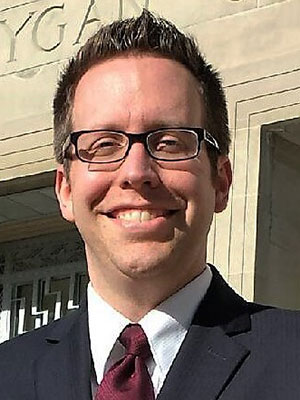 Joel Urmanski, Marquette 2006, is the Sheboygan County district attorney. Named an “Up and Coming Lawyer” by Wisconsin Law Journal in 2014, he has been a prosecutor since 2006 and was first elected district attorney in 2016. In recent years, this region of the state has seen increased law enforcement focus on human trafficking and public awareness of its prevalence.
Joel Urmanski, Marquette 2006, is the Sheboygan County district attorney. Named an “Up and Coming Lawyer” by Wisconsin Law Journal in 2014, he has been a prosecutor since 2006 and was first elected district attorney in 2016. In recent years, this region of the state has seen increased law enforcement focus on human trafficking and public awareness of its prevalence.
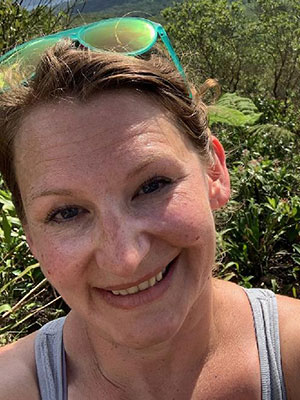 Erin Karshen, Marquette 2003, is the Milwaukee County assistant district attorney. She is on the Wisconsin Internet Crimes Against Children Task Force and is the team captain of the Milwaukee Sensitive Crimes Unit, supervising six other attorneys. Karshen prosecutes sexual assaults involving child and adult victims, domestic violence sexual assaults, human trafficking cases, child pornography, sextortion, and other invasion-of-privacy crimes. She has presented on the topic of human trafficking to law enforcement and nurses and in schools. She also created a program to teach internet safety to local schools and so far has presented to more than 2,000 students from second grade to eighth grade. Her work in sextortion has been noticed by the Brookings Institute and other national platforms.
Erin Karshen, Marquette 2003, is the Milwaukee County assistant district attorney. She is on the Wisconsin Internet Crimes Against Children Task Force and is the team captain of the Milwaukee Sensitive Crimes Unit, supervising six other attorneys. Karshen prosecutes sexual assaults involving child and adult victims, domestic violence sexual assaults, human trafficking cases, child pornography, sextortion, and other invasion-of-privacy crimes. She has presented on the topic of human trafficking to law enforcement and nurses and in schools. She also created a program to teach internet safety to local schools and so far has presented to more than 2,000 students from second grade to eighth grade. Her work in sextortion has been noticed by the Brookings Institute and other national platforms.
Survivor Leader-Advocates
 Nancy Yarbrough, founder and executive director, Fresh Start Learning Inc., author. Her nonprofit runs street outreach programs, survivor groups, and a drop-in shelter and provides education and training regarding sex trafficking. She is a commissioner of Milwaukee’s sexual assault and domestic violence commission, a TEDOshkosh speaker, and has won various awards including Milwaukee Magazine’s Women of Distinction, citations from county supervisors, and state representatives and senators. She is a certified trainer in trauma-informed care and sexual exploitation curricula.
Nancy Yarbrough, founder and executive director, Fresh Start Learning Inc., author. Her nonprofit runs street outreach programs, survivor groups, and a drop-in shelter and provides education and training regarding sex trafficking. She is a commissioner of Milwaukee’s sexual assault and domestic violence commission, a TEDOshkosh speaker, and has won various awards including Milwaukee Magazine’s Women of Distinction, citations from county supervisors, and state representatives and senators. She is a certified trainer in trauma-informed care and sexual exploitation curricula.
 Claudine O’Leary is an independent consultant training and building the capacity of private and public agencies across the state to better respond to commercial sexual exploitation of youth. She is founding director of Represent, an all-volunteer organization in Milwaukee leading harm-reduction groups for young people in the sex trades and street economies. She has been supporting and building the leadership of teens and young adults impacted by the sex trades for almost 30 years. She is among the state’s most sought-after contributors to policy and prevention efforts regarding trafficked youth.
Claudine O’Leary is an independent consultant training and building the capacity of private and public agencies across the state to better respond to commercial sexual exploitation of youth. She is founding director of Represent, an all-volunteer organization in Milwaukee leading harm-reduction groups for young people in the sex trades and street economies. She has been supporting and building the leadership of teens and young adults impacted by the sex trades for almost 30 years. She is among the state’s most sought-after contributors to policy and prevention efforts regarding trafficked youth.
Victim Services
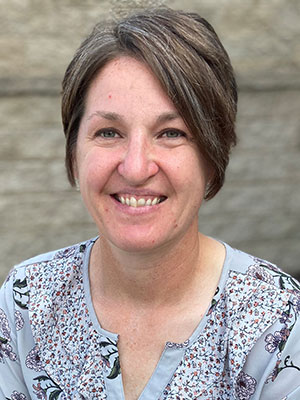 Brenda Bayer, human trafficking advocate, has been the Human Trafficking Program advocate at Women’s Community Inc. in Wausau since 2017. She provides direct services to individuals who have been affected by trafficking. She is a team member on a Wausau-area Human Trafficking Task Force and works to raise awareness about human trafficking through community education and outreach. She also serves on the legislative committee for the statewide Human Trafficking Consortium. Bayer worked at Homme Youth & Family Services in the girls sex trafficking unit conducting applicant interviews, as well as providing direct client support on the residential unit, and served in the military for 25 years, where her main focus was a life-skills curriculum presented to middle and high school students.
Brenda Bayer, human trafficking advocate, has been the Human Trafficking Program advocate at Women’s Community Inc. in Wausau since 2017. She provides direct services to individuals who have been affected by trafficking. She is a team member on a Wausau-area Human Trafficking Task Force and works to raise awareness about human trafficking through community education and outreach. She also serves on the legislative committee for the statewide Human Trafficking Consortium. Bayer worked at Homme Youth & Family Services in the girls sex trafficking unit conducting applicant interviews, as well as providing direct client support on the residential unit, and served in the military for 25 years, where her main focus was a life-skills curriculum presented to middle and high school students.
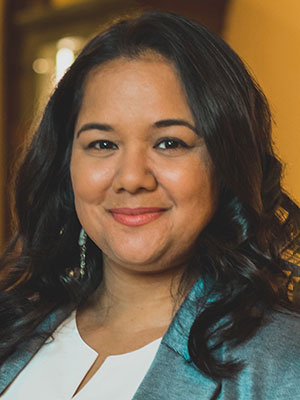 Lea Denny is founder, clinical director, and CEO of HIR Wellness Institute and Center (statewide, increasing capacity toward Native American/Indigenous peoples). She trains advocates, mental health professionals, and educators to benefit individuals and address historical trauma. Her research has developed an approach to community care and resilience called “Community Activated Medicine™” (CAM) and she trains on this model in the United States and internationally. She was the inaugural recipient of the Ana Grace Scholarship with Dr. Bruce Perry’s Child Trauma Academy and is a neurosequential model of therapeutics (NMT) trainer.
Lea Denny is founder, clinical director, and CEO of HIR Wellness Institute and Center (statewide, increasing capacity toward Native American/Indigenous peoples). She trains advocates, mental health professionals, and educators to benefit individuals and address historical trauma. Her research has developed an approach to community care and resilience called “Community Activated Medicine™” (CAM) and she trains on this model in the United States and internationally. She was the inaugural recipient of the Ana Grace Scholarship with Dr. Bruce Perry’s Child Trauma Academy and is a neurosequential model of therapeutics (NMT) trainer.
Courts and Legal Services
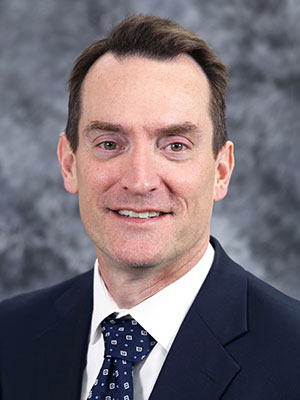 Hon. Thomas J. Walsh, Hamline 1992, Brown County Circuit Court. Judge Walsh frequently writes on the potential of specialty courts to transform the justice system and increase successful long-term outcomes for individuals through holistic approaches. He presides over the Brown County Heroin Treatment Court (since 2015) and the Brown County Family Recovery Court (since 2020).
Hon. Thomas J. Walsh, Hamline 1992, Brown County Circuit Court. Judge Walsh frequently writes on the potential of specialty courts to transform the justice system and increase successful long-term outcomes for individuals through holistic approaches. He presides over the Brown County Heroin Treatment Court (since 2015) and the Brown County Family Recovery Court (since 2020).
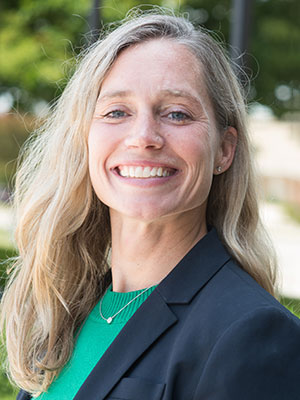 Erika Petty, Marquette 2006, is executive director and lead attorney at LOTUS Legal Clinic, where she has worked with survivors of sexual violence and human trafficking since 2016. She supervises staff attorneys and handles her own caseload, providing civil and immigration legal services to survivors. She is a frequent presenter and speaker on victims’ rights and on meeting the needs of human trafficking survivors through a rights-based and victim centered lens. The Association for Women Lawyers honored her with the Pro Bono Service award for 2019.
Erika Petty, Marquette 2006, is executive director and lead attorney at LOTUS Legal Clinic, where she has worked with survivors of sexual violence and human trafficking since 2016. She supervises staff attorneys and handles her own caseload, providing civil and immigration legal services to survivors. She is a frequent presenter and speaker on victims’ rights and on meeting the needs of human trafficking survivors through a rights-based and victim centered lens. The Association for Women Lawyers honored her with the Pro Bono Service award for 2019.
Meet Our Contributors
In addition to your legal practice, you breed and raise Vizslas. What’s that about?
 During the time I was writing my article for this issue, we had 12 dogs in the house; a 3 year old (pup’s mama), a 16 year old (uncle), and a litter of 10 pups born July 21. Our kennel, Wyldfire Vizslas, is a dream realized after 20 years of owning this zany, affectionate, life-changing breed. They’re called “Velcro Vizslas” and are the aristocratic clowns of the hunting dog world.
During the time I was writing my article for this issue, we had 12 dogs in the house; a 3 year old (pup’s mama), a 16 year old (uncle), and a litter of 10 pups born July 21. Our kennel, Wyldfire Vizslas, is a dream realized after 20 years of owning this zany, affectionate, life-changing breed. They’re called “Velcro Vizslas” and are the aristocratic clowns of the hunting dog world.
Such a large litter was more work than I’d ever imagined but well worth it. The families taking puppies are wonderful and they’ll stay in touch. My world and my heart are bigger. Writing and sending emails in between bursts of pup cleanup and bottle feeding with goat milk during the night every 90 minutes, I learned to let go of what I can’t control. Also, I learned there is nothing like a sleeping puppy to remind me that life is fleeting and so beautiful and that the present moment is all I have.
Rachel K. Monaco, LOTUS Legal Clinic, Richfield.
Become a contributor! Are you working on an interesting case? Have a practice tip to share? There are several ways to contribute to Wisconsin Lawyer. To discuss a topic idea, contact Managing Editor Karlé Lester at (800) 444-9404, ext. 6127, or email klester@wisbar.org. Check out our writing and submission guidelines.
Endnotes
1 Justine and Lily’s names are changed to respect their privacy. Justine and the author have known each other since 2018. Justine shared her experience to help others understand survivor’s perspectives and the complexity of the issue of sex trafficking.
2 Rachel Monaco-Wilcox & Daria Mueller, Under the Radar, Human Trafficking in Wisconsin, Wis. Law. (Oct. 2017).
3 Wisconsin laws: Wis. Stat. § 940.302 (human trafficking); Wis. Stat. § 948.051 (trafficking of a child); federal laws: 22 U.S.C. ch. 78 (trafficking victims protection); and Victims of Trafficking and Violence Protection Act of 2000, Pub. L. No. 106-386, 114 Stat. 1464.
4 U.S. Dep’t of Homeland Security, What Is Human Trafficking?, www.dhs.gov/blue-campaign/what-human-trafficking (last visited Sept. 16, 2021).
5 In this article, the words “victim” and “survivor” are used interchangeably to give respect to both the necessary legal term as well as a different view of an individual who has experienced sex trafficking. Some individuals prefer neither term, and when in doubt it is always appropriate to ask someone their preference.
6 Wisconsin law allows trafficking victims to vacate a prostitution conviction. Wis. Stat. § 973.015.
7 Erin Karshen, Nancy Yarbrough, and Lea Denny responded by phone interview.
8 The federal Violence Against Women Act combats most forms of violence against women and currently awaits Senate passage for reauthorization. The current reauthorization bill specifically expands federal assistance to victims of human trafficking and services to native and indigenous people. H.R. 1620 passed the House of Representatives in March 2021.
» Cite this article: 94 Wis. Law. 18-27 (October 2021).
